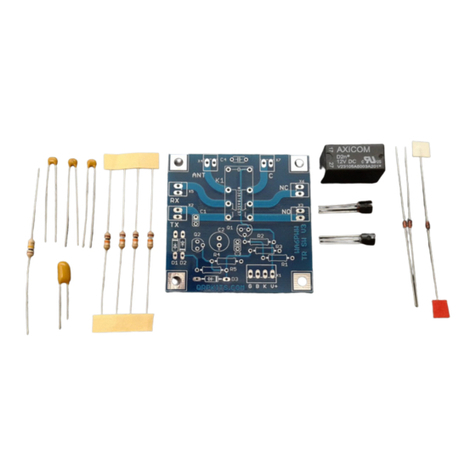
Tools Needed
□ Temperature Controlled Soldering Station with small tip
or 15-35 watt soldering iron with small tip.
□ Solder 60/40 or 63/37 Tin-Lead
□ Small Diagonal Cutters
□ Small Needle Nose Pliers
□ Pencil, Pen, and/or Highlighter
□ BRIGHT work light
Optional
□ Magnifying headpiece or lighted magnifying glass.
□ Multi-meter
□ Solder Sucker or Solder Wick
□ Knife or Wire Stripper
□ Cookie Sheet to build in and keep parts from jumping onto the floor.
Construction Techni ues
□ Please take time to inventory the parts before starting. Report any shortages to QRPKITS.com (In
many cases it may be faster and cheaper to pull a replacement from your parts supply, but please
let us know if we missed something.)
□ Pre-sorting the resistors and capacitors can speed up the assembly and reduce mistakes.
□ There is no need to print out the whole assembly manual unless you want a copy. Print the Parts
List and Schematic (last two pages) then view the rest of the manual on a computer, laptop, or
tablet. The Parts List has columns for inventory and construction.
□ You can insert several parts at a time onto the board. When you insert a part bend the leads over
slightly to hold the part in place, then solder all at the same time. Clip the leads flush.
□ Most parts should be mounted as close to the board as possible. Transistors should be mounted
about 1/8” above the board. Solder one lead on ICs or IC sockets and then check to make sure the
component is flush before soldering the remaining leads.
□ Use a Temperature Controlled Soldering Station with small tip or 15-35 watt soldering iron with
small tip. Conical or very small screw driver tips are best.
□ DO NOT use a large soldering iron or soldering gun.
□ If you are a beginner, new to soldering, there are a number of resources on the web to help you
get on the right track soldering like a pro. Google Soldering Techniques.
Easy TR Switch 20170209 2



























